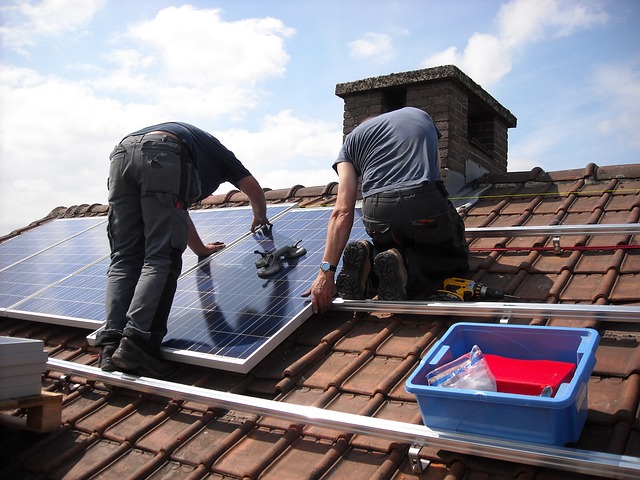Ari Natter, Bloomberg
Representative Alexandria Ocasio-Cortez released a sweeping package of environmental measures Thursday that has pitted progressives in the House Democratic caucus against moderates over how far to go in pursuit of resetting the climate change debate.
The proposals, which have come to be known as the Green New Deal, were crafted in conjunction with Senator Ed Markey of Massachusetts. Their plan envisions shifting away from fossil fuels and other sources of emissions that cause global warming within 10 years.
It also calls for moving away from nuclear power, according to a fact sheet on the plan distributed by Ocasio-Cortez’s office, which some climate activists favor as a carbon-free energy source.
“Even the solutions that we have considered big and bold are nowhere near the scale of the actual problem that climate change presents to us, our country, our world,” Ocasio-Cortez said on NPR’s Morning Edition. “No one has actually scoped out what that larger solution would entail. And so that’s really what we’re trying to accomplish with the Green New Deal.”
The plan has already gathered 60 co-sponsors in the House and has prompted strong opposition from Republicans and industry leaders who say it’s technologically impossible and will costs tens of trillions of dollars.
It has also received a tepid response from House Speaker Nancy Pelosi. When asked for her response to the plan, Pelosi spokesman Drew Hammill pointed to remarks the California Democrat made in an interview with Politico published Thursday.
“It will be one of several or maybe many suggestions that we receive,” Pelosi said. “The green dream or whatever they call it, nobody knows what it is, but they’re for it right?”
Advocacy of stronger environmental laws has been an important part of the agenda of Ocasio-Cortez, a New York Democrat, and other progressives in the new Congress. Hundreds of young activists stormed Pelosi’s office after Democrats won the House in November and were briefly joined by Ocasio-Cortez in a live-streamed protest to demand passage of a radical plan to fight climate change.
The proposal has no chance of gaining support in the Republican-controlled Senate, let along being signed into law by President Donald Trump, and has revealed some rifts within the environmental movement. But has become a rallying cry among some liberals.
The plan, in the form of a non-binding resolution, weaves together what had been a hodgepodge of progressive proposals and aspirations into a single initiative. It sets a goal of shifting the nation to 100 percent “clean, renewable, and zero-emission energy sources,” within 10 years “to achieve net-zero greenhouse gas emissions through a fair and just transition for all communities and workers.”
While the plan doesn’t explicitly call for a ban on fossil fuels, as some early backers had hoped, Ocasio-Cortez’s office has made it clear that the plan doesn’t leave a path forward for the fuel source, which a fact sheet on the plan said would make “new fossil fuel infrastructure or industries obsolete.”
But that wasn’t enough to stave off criticism from environmental groups like Friends of the Earth. While the group’s president, Erich Pica, praising the resolution as “a good first step,” but said it was incomplete. “By failing to expressly call for an end of the fossil fuel era, the resolution misses an opportunity to define the scope of the challenge,” Pica said.
The fact sheet also makes explicitly clear there is “no space” for nuclear power in the plan amid a goal of eventually achieving 100 percent renewable energy.
“This means that the Green New Deal will not include investing in new nuclear power plants and will transition away from nuclear to renewable power sources only,” according to the document, which also raised the prospect of decommissioning existing nuclear plants in favor of renewable energy sources.
That provision drew a response from a nuclear trade group.
“Any approach to eliminating greenhouse gas emissions requires all clean energy technologies, including nuclear, to work together to address that urgent problem,” Maria Korsnick, president of the Nuclear Energy Institute said in a statement. The group, which includes Westinghouse Electric Co. and Exelon Corp, said nuclear energy generates more than half the nation’s carbon-free electricity.
Supporters say the resolution’s measures are needed to avert a coming climate catastrophe already being presaged by devastating storms, raging wildfires and intense heat waves.
Among its provisions:
- A dramatic expansion of renewable energy, and energy and water efficiency upgrades for all existing U.S. buildings;
- An overhaul of the country’s transportation system to eliminate pollution and emissions from the sector “as much as technologically feasible,” with a nod to investment in zero-emission vehicles, public transit, and high-speed rail;
- Efforts to promote clean manufacturing free of pollution byproducts and greenhouse gas emissions “as much as technologically feasible;”
- Steps to lessen the effects of climate change, build a smart grid, clean up hazardous waste sites and restore threatened lands; and
- A goal of health care and guaranteed jobs for all.




